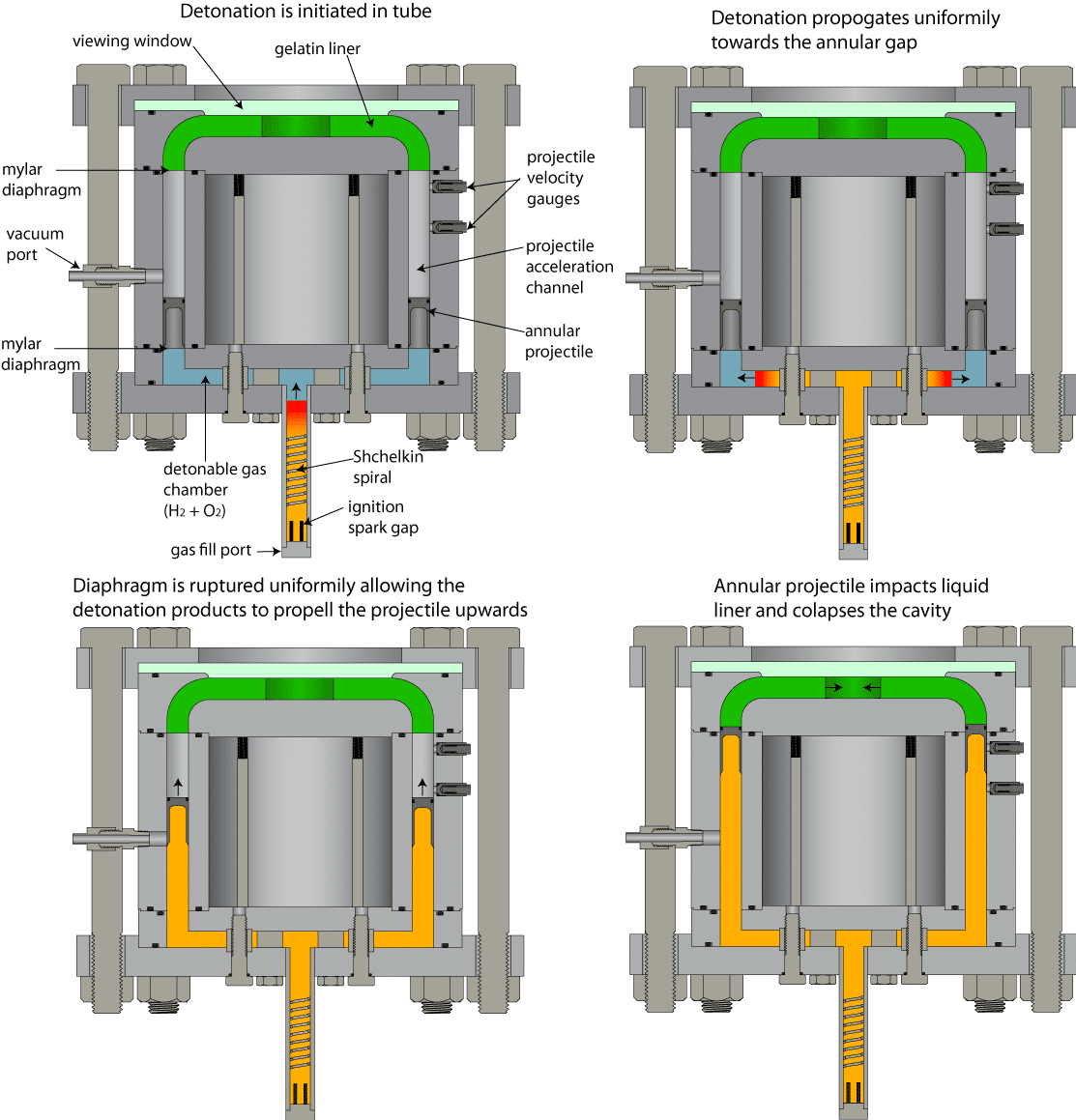The tensile or spall failure of solids subjected to impulsive loading, such as a high velocity flyer impact or contact with detonating energetic material, has been studied extensively. It is well understood that wave interactions caused by planar impacts can lead to large tensile stresses in a material. This work will focus on studying the tensile failure or cavitation of gels subjected to impact driven impulsive loading. More specifically, a device has been developed to study the effect of cavitation on the impact driven collapse of gel rings. The operation of the device is shown schematically in Figure 1. The device uses the reaction of a detonable gas to drive an annular projectile, which then impacts a gel liner causing it to implode.

As can be seen in Figure 1, the apparatus is a cylindrical pressure vessel with a central obstruction that forms three distinct sections that are isolated from each other with annular diaphragms: a cylindrical driver section, and annular projectile acceleration section, and an implosion section with a large curvature to transition from an annular to a cylindrically converging geometry. The ignition tube and driver section are initially filled with detonable gas. The mixture is initiated by a spark gap at the base of the tube, thus igniting the mixture and forming a detonation wave which moves into the driver section where it begins to uniformly move outwards towards annular gap. As the detonation reaches the annular gap, it ruptures the annular diaphragm uniformly and accelerates the projectile to approximately 75 m/s via the expansion of the detonation products. The projectile travels upwards in the evacuated channel until it impacts a thin diaphragm in contact with the gel ring, causing it to implode. By varying the piston thickness, velocity, material, and profile, it is possible to vary the duration, magnitude, and shape of the pressure pulse applied to the gel.
The initial size of the cavity is such that the gel wall is much thicker than the impacting projectile. During the impact, the compression wave driven towards the back of the projectile will reflect as a rarefaction wave. This rarefaction wave will transmit into the gel and travel towards the leading compression wave, which in turn will reflect off the inner surface of the gel as a rarefaction wave. The interaction between the rarefaction waves from the gel and projectile free surfaces leads to large tensile stresses resulting in cavitation.
In order to study this phenomenon, the position, velocity, and planarity of the annular projectile is monitored using a series of twelve induction coils which produce a voltage signal as small rare earth magnets embedded in the projectile pass over location of the gauges. The implosion is visualized by a high-speed camera through a window which forms the top confining wall of the implosion cavity.

